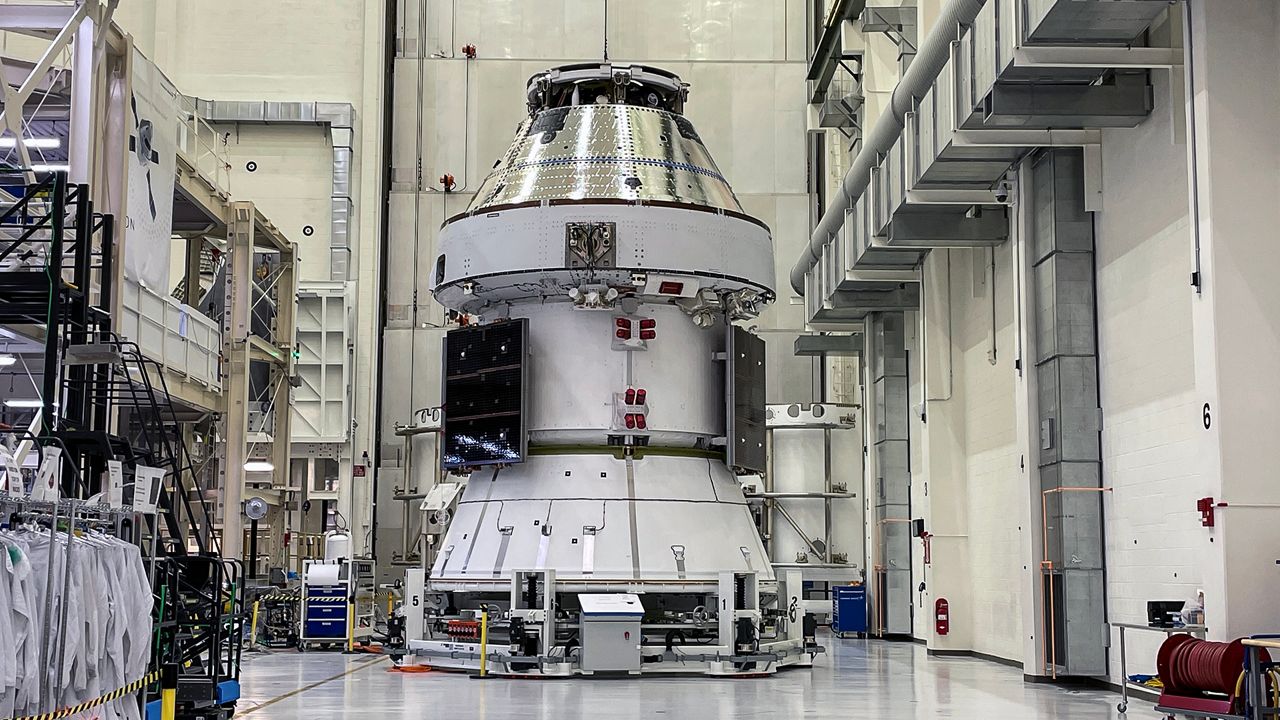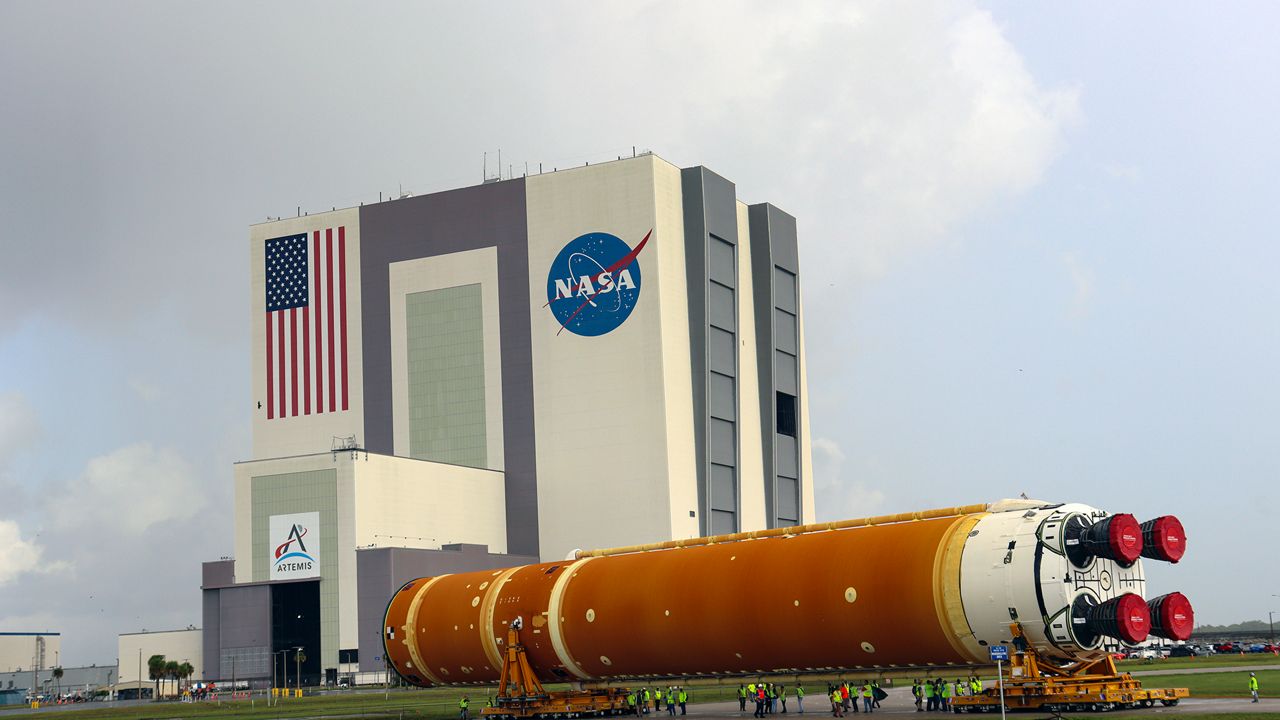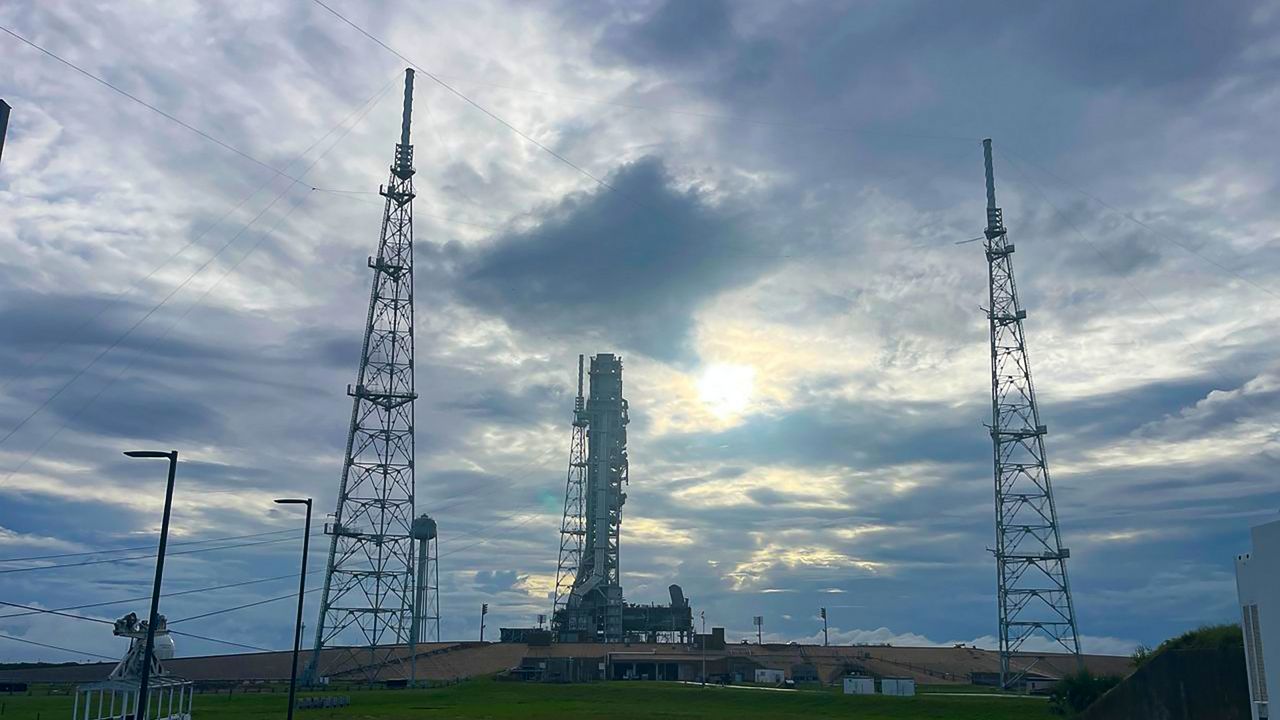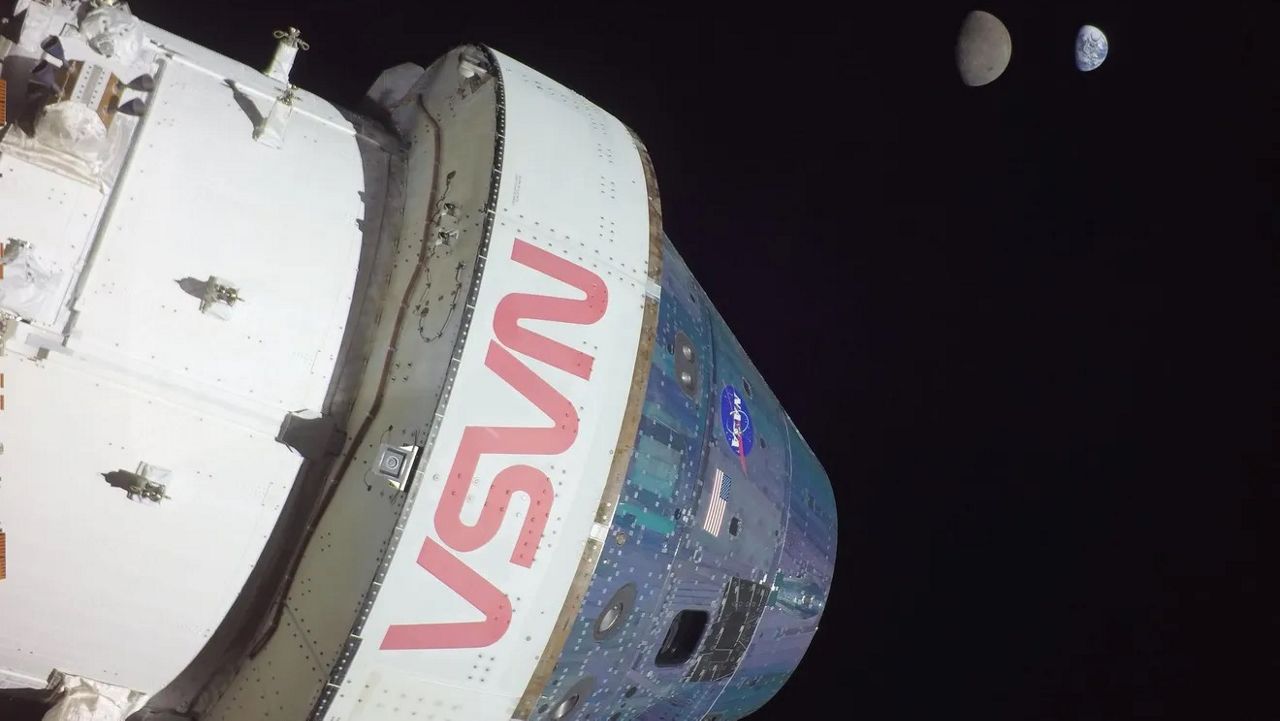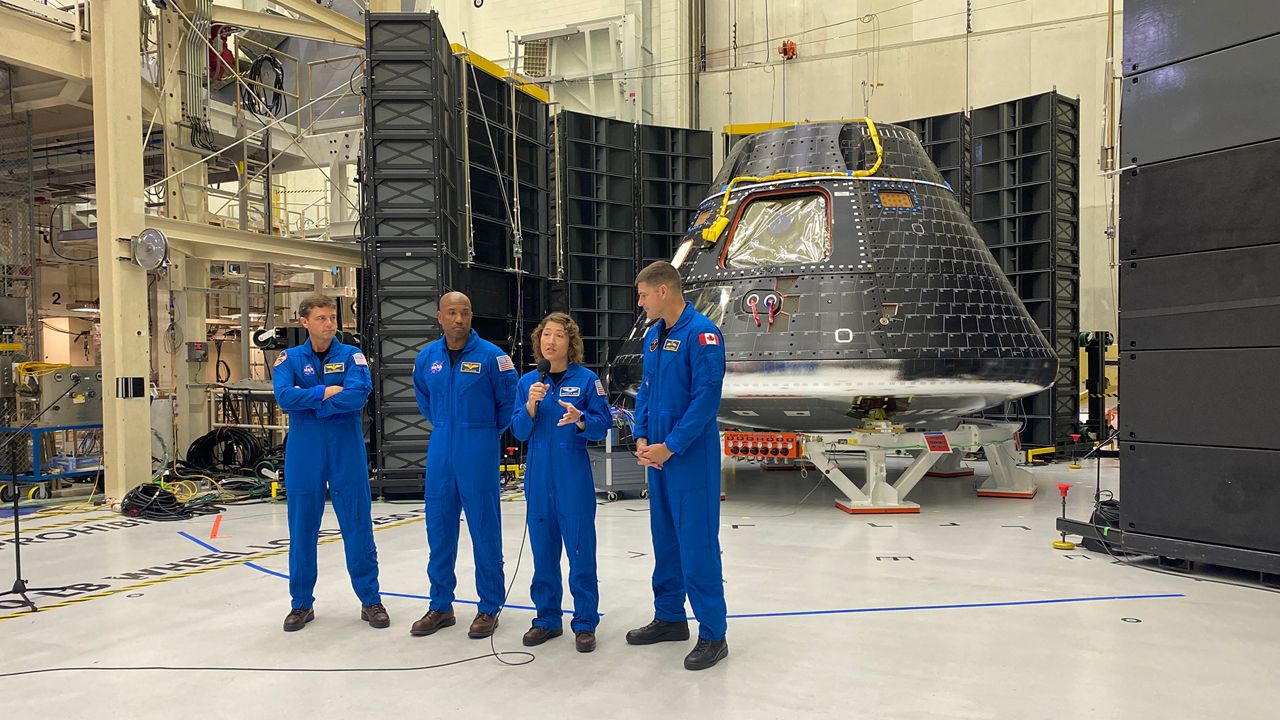KENNEDY SPACE CENTER — It is an iconic machine whose work has spanned nearly the entire history of NASA. And without it, the Saturn V rocket and space shuttle launches would not have been possible.
“We are going to the moon. We are going to Mars. This is almost 60 years old, so we have the past and the present,” John Giles, NASA’s Crawler Element Operations manager, said.
What You Need To Know
- The Crawler Transporter 2 was built to carry heavy rockets to the launch pad
- When heading to Launch Pad 39B, it goes at a fast and furious pace of 1 mile an hour
- And very old train engines power the crawler
- RELATED coverage: NASA engineers prepare Launch Pad 39B at Kennedy Space Center for the Artemis II moon mission
Now the famed Crawler Transporter 2 will usher in the Artemis Program, the next generation of NASA spaceflight that is taking humans back to the moon.
There are no speed records being set this day during a test run at Kennedy Space Center. Moving along the ground at a mere 1 mile per hour is where the crawler does its heavy lifting.
Crawler Transporter 2’s job is to move the Artemis mission’s Space Launch System rocket to Launch Pad 39B on a 4-mile, 8-hour journey. NASA says it weighs 6.6 million pounds, comparable to the weight of 15 Statue of Liberties or 1,000 pickup trucks.
Now add a rocket and mobile launcher, and you are reaching upwards of 27 million pounds.
Inside the crawler is a fusion of old and new technology thanks to a two-yearlong refurbishment. And when we say old, we mean it.
The engines were built in the early 1900s for locomotives. So, train engines power the crawler.
Mechanical engineer Joseph Jones with Aerodyne worked on their refit, making the crawler capable of carrying up to an additional 18 million pounds.
“We got six years out of the engines on the first build. We wanted to go ahead and get them back to the original specs, original equipment, get more years out of it. We can and not have to worry about it. This engine should run for the rest of this program, maybe longer,” Jones said.
You have all that power, but you need to generate it, which is why four refurbished 1,500-kilowatt generators create the electricity to power the crawler.
Sam Dove is a crawler transporter engineer under Jacobs and says the generators play a key role.
“Without these, you cannot move the crawler. They are an older technology, but they work so well. I can make this crawler go so slow you can barely tell it’s moving, or a little faster, and it will consistently do it over and over. However many Artemis flights we want to make,” Dove explained.
It’s been a journey from Apollo to Artemis. From the first Saturn V moved to the pad for Apollo 8, the first crewed mission around the moon.
Now to Artemis II, the first crewed mission around the moon nearly 60 years later.
And it’s just a couple miles away from hitting 2,500 miles, transporting 100s of rockets and shuttles to and from the pad.
A living legacy.
“In reliability and use, nothing has changed, it’s still the same crawler,” Jones says.
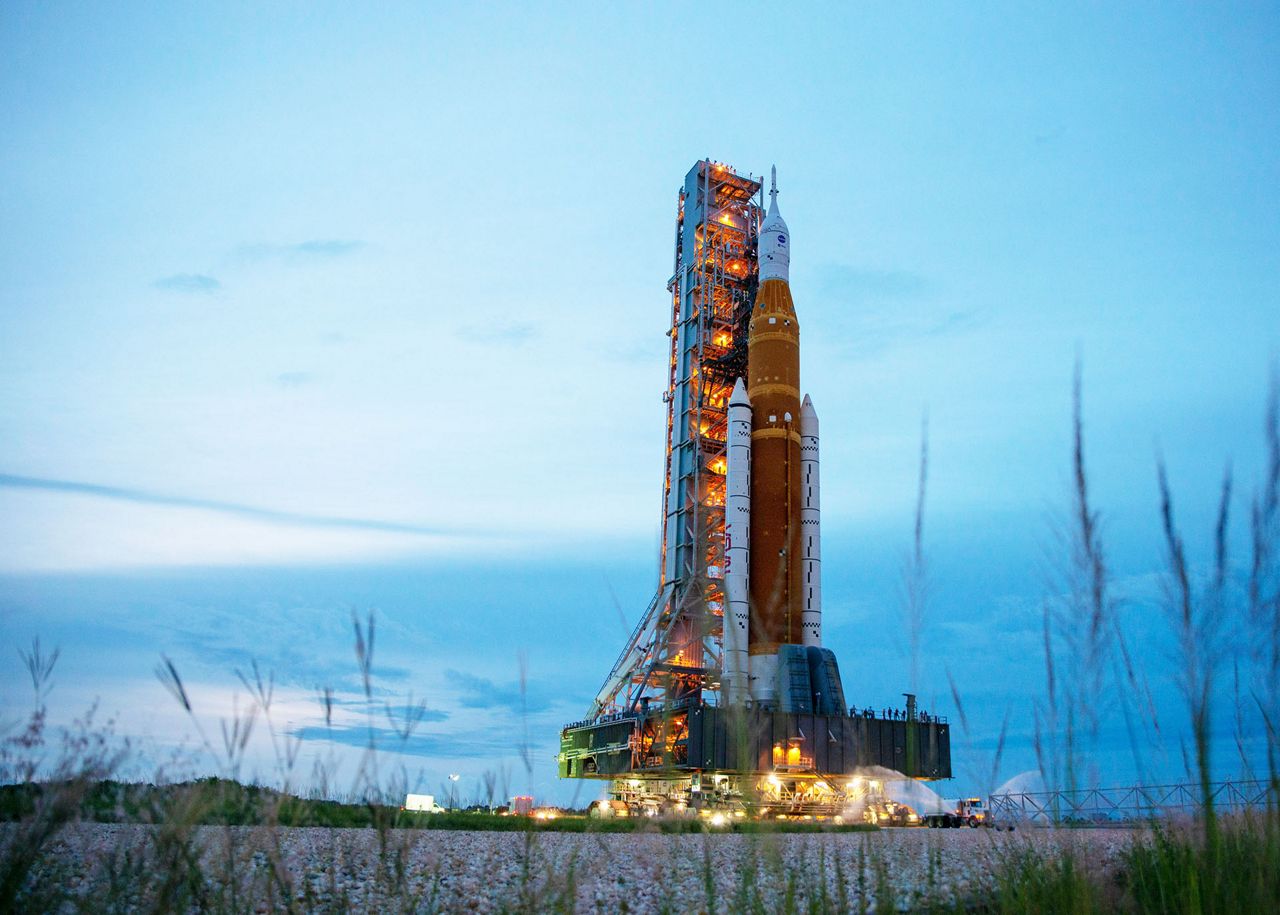
Crawler Transporter 2 has already served in the Artemis Program, supporting the Artemis I launch in November 2022.
Guinness World Records has certified it as the “heaviest self-powered vehicle”.






